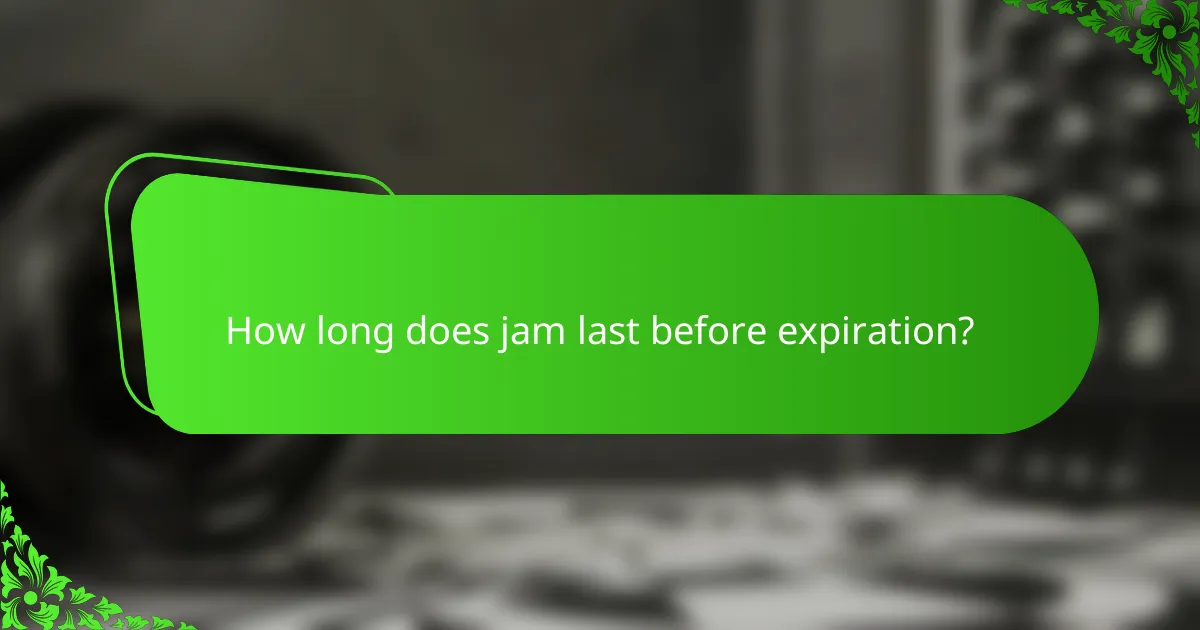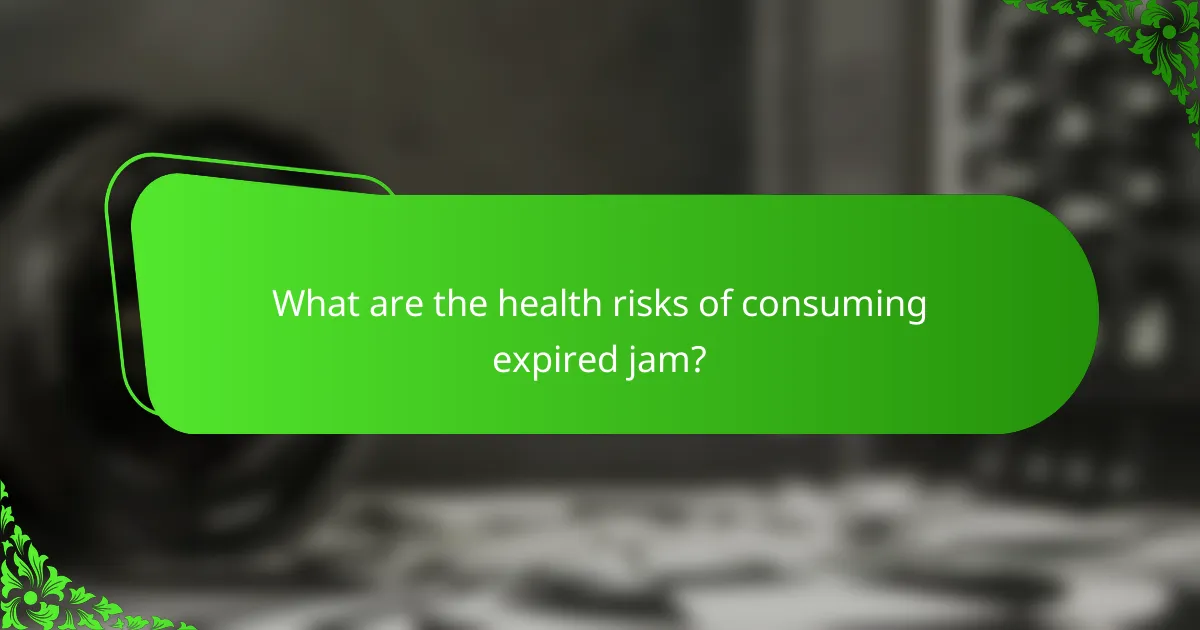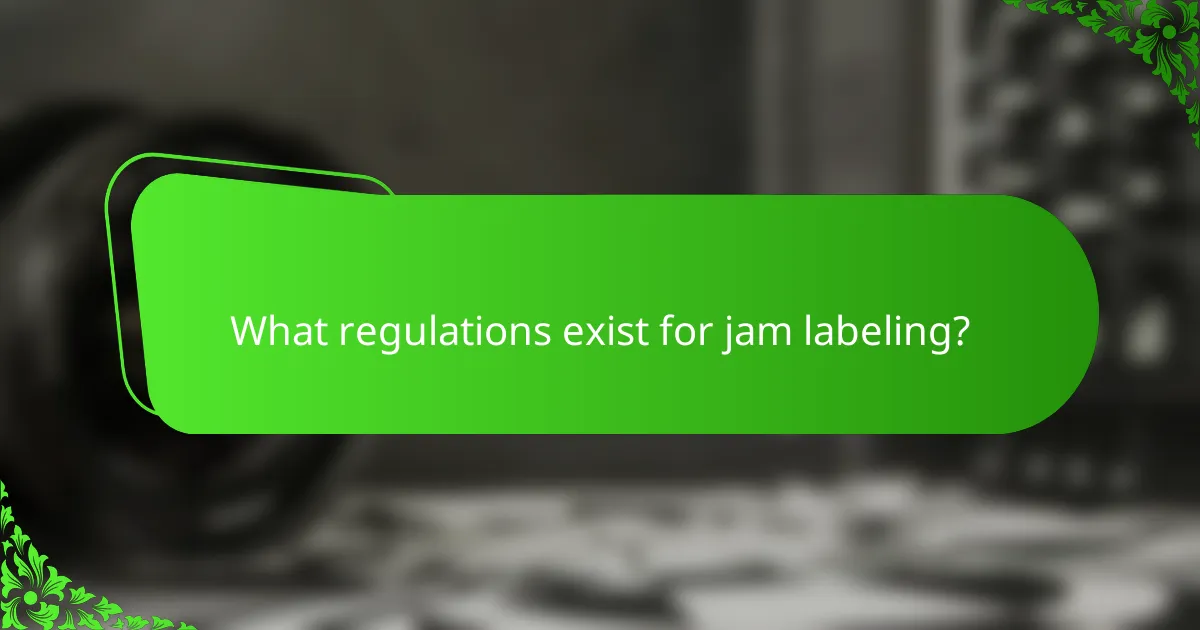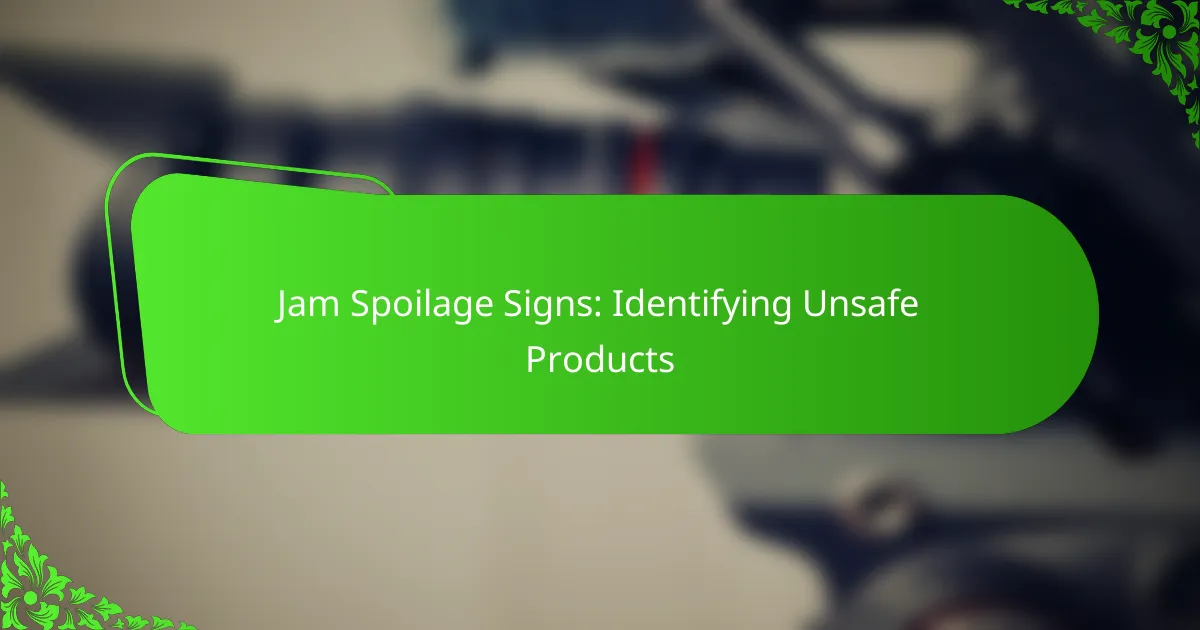Understanding jam expiration dates is crucial for consumers to ensure safety and quality. Typically, jam lasts one to three years, with proper storage playing a key role in extending its shelf life. Recognizing signs of spoilage, such as visual changes and off smells, can help determine if the jam is still safe to consume.

How long does jam last before expiration?
Jam typically lasts for about one to three years before it expires, depending on whether it is opened or unopened. Proper storage conditions can significantly extend its shelf life, so understanding these factors is essential for consumers.
Typical shelf life of unopened jam
Unopened jam can last for several years, generally between two to three years from the production date. The high sugar content acts as a preservative, helping to maintain its quality over time. Always check the “best by” date on the jar for guidance.
Typical shelf life of opened jam
Once opened, jam usually remains good for about six months to one year when stored in the refrigerator. The exposure to air and potential contamination can shorten its lifespan, so it’s crucial to use clean utensils when serving. If the jam shows signs of spoilage, such as mold or an off smell, it should be discarded.
Factors affecting jam longevity
Several factors can influence how long jam lasts, including storage conditions, ingredients, and packaging. Keeping jam in a cool, dark place and sealing it tightly after each use can help preserve its freshness. Additionally, homemade jams may have shorter shelf lives due to the absence of preservatives compared to commercially produced varieties.
Environmental factors like temperature fluctuations and humidity can also impact jam quality. For optimal longevity, store jam in a consistent, cool environment and avoid leaving it out at room temperature for extended periods.

What are the signs of expired jam?
Expired jam can exhibit several signs indicating it is no longer safe to consume. Key indicators include visual changes, off smells, and altered tastes, which can help you determine if the jam should be discarded.
Visual indicators of spoilage
One of the first signs of expired jam is the presence of mold or unusual discoloration on the surface. If you notice any fuzzy growth or a change in color, it’s best to throw the jar away. Additionally, if the jam has separated significantly or appears overly watery, these are also signs that it may no longer be good.
Check the jar for any bulging lids or leaks, which can indicate that bacteria have produced gas inside the container. A properly sealed jar should not show these signs, so any abnormalities warrant caution.
Smell and taste changes
Expired jam often develops an off smell that is noticeably different from its original fruity aroma. If the jam smells sour or fermented, it is a clear indication that it has spoiled and should not be consumed.
Tasting a small amount can also help determine freshness, but only if the smell seems acceptable. If the flavor is significantly altered, overly sweet, or has a strange aftertaste, it’s best to discard the jam to avoid any risk of foodborne illness.

How to properly store jam for longevity?
To ensure jam lasts as long as possible, store it in a cool, dark place and keep it sealed tightly. Proper storage methods can significantly extend its shelf life and maintain flavor and quality.
Best storage conditions for jam
The ideal storage conditions for jam involve keeping it in a cool, dark environment, such as a pantry or cupboard. Temperatures between 10°C and 20°C (50°F to 68°F) are generally suitable. Avoid exposure to direct sunlight and heat sources, which can degrade the jam’s quality over time.
Once opened, jam should be refrigerated to slow down spoilage. Ensure the lid is tightly sealed to prevent contamination and moisture from entering the jar, which can lead to mold growth.
Refrigeration vs. pantry storage
Refrigeration is crucial for opened jam, as it helps preserve freshness and flavor. While unopened jars can be stored in the pantry, once opened, they should be transferred to the fridge, where they can last several weeks to a few months, depending on the ingredients.
In contrast, pantry storage is suitable for unopened jars, which can typically last for a year or more if kept in optimal conditions. Always check the expiration date and look for signs of spoilage, such as off smells or mold, before consuming jam, regardless of storage method.

What are the health risks of consuming expired jam?
Consuming expired jam can pose health risks primarily due to the potential growth of harmful bacteria and molds. While jam has a long shelf life, once it surpasses its expiration date, the risk of foodborne illnesses increases significantly.
Potential foodborne illnesses
Expired jam can harbor bacteria such as Salmonella, E. coli, and Listeria, which can lead to serious foodborne illnesses. These pathogens thrive in improperly stored or contaminated products, especially if the jam has been opened and exposed to air and moisture.
To minimize risks, always check for signs of spoilage before consuming jam, especially if it is past its expiration date. If you notice any unusual odors, colors, or textures, it is safer to discard the product.
Symptoms of spoilage consumption
If someone consumes expired jam that contains harmful bacteria, they may experience symptoms such as nausea, vomiting, diarrhea, and abdominal cramps. These symptoms can appear within hours to a few days after consumption, depending on the type of bacteria involved.
In more severe cases, individuals may develop fever or dehydration, requiring medical attention. If you suspect food poisoning from expired jam, it is advisable to seek medical help, especially for vulnerable populations like young children, the elderly, or those with weakened immune systems.

How do different brands compare in shelf life?
Different jam brands have varying shelf lives, typically ranging from one to three years when unopened. Once opened, most jams last about six months to a year, depending on the ingredients and storage conditions.
Comparison of popular jam brands
Brands like Smucker’s, Bonne Maman, and Polaner are well-known for their longevity. Smucker’s jams can last up to three years unopened, while Bonne Maman offers a more natural product with a shelf life of about two years. Polaner, known for its fruit spreads, generally has a similar shelf life to Bonne Maman.
When considering organic options, brands like St. Dalfour may have a shorter shelf life due to fewer preservatives, averaging around one to two years unopened. Always check the packaging for specific expiration dates, as they can vary by flavor and batch.
Consumer reviews on longevity
Consumer feedback often highlights the importance of proper storage in maintaining jam quality. Many users report that jams stored in a cool, dark place last longer than those kept in warm or humid environments. Reviews suggest that once opened, jams should be refrigerated to maximize freshness.
Some consumers have noted that while jams may still be safe to eat after their expiration dates, the flavor and texture can deteriorate. It’s common for users to recommend tasting a small amount before using older jars, especially if they have been opened for an extended period.

What regulations exist for jam labeling?
Jam labeling regulations ensure that consumers receive accurate information about the product’s quality and safety. These regulations typically cover aspects such as ingredient listing, nutritional information, and expiration dates.
FDA guidelines on expiration dates
The FDA does not mandate specific expiration dates for jam, but it does require that products be labeled with a “best by” or “use by” date to indicate peak quality. This helps consumers understand when the product is likely to be at its best flavor and texture.
Manufacturers are encouraged to conduct stability testing to determine how long their jams maintain quality. Generally, unopened jars can last for one to two years, while opened jars should be consumed within a few weeks to a few months, depending on storage conditions.
Consumer protection laws in the US
Consumer protection laws in the US ensure that food labeling is truthful and not misleading. This includes regulations that require clear labeling of expiration dates, which help consumers make informed choices about their food purchases.
Violations of these laws can lead to penalties for manufacturers, including fines and product recalls. Consumers should report any misleading labels to the FDA or local health authorities to help maintain food safety standards.

What are emerging trends in jam preservation?
Emerging trends in jam preservation focus on natural ingredients, sustainability, and innovative packaging. Consumers are increasingly seeking products that are free from artificial preservatives and made with organic fruits, while also favoring eco-friendly packaging solutions.
Natural ingredients and health consciousness
There is a growing demand for jams made with natural ingredients, reflecting a broader health consciousness among consumers. Many brands are now using organic fruits and minimizing added sugars, which appeals to health-focused shoppers. This trend encourages producers to highlight the purity and nutritional benefits of their products.
Sustainable packaging solutions
Sustainability is becoming a key factor in consumer choices, leading to innovations in packaging. Brands are exploring biodegradable, recyclable, and reusable materials to reduce environmental impact. For example, glass jars are favored for their recyclability, while some companies are experimenting with compostable pouches.
Innovative preservation methods
New preservation techniques are emerging, such as low-temperature pasteurization and vacuum sealing, which help maintain flavor and nutrients without the need for chemical preservatives. These methods can extend shelf life while appealing to consumers looking for fresher, more flavorful options. Brands that adopt these techniques often market them as premium products.
Local sourcing and artisanal production
There is a notable trend toward local sourcing and artisanal production in the jam industry. Consumers are increasingly interested in products that support local farmers and reflect regional flavors. This trend not only promotes community engagement but also enhances the perceived quality and uniqueness of the jams.










